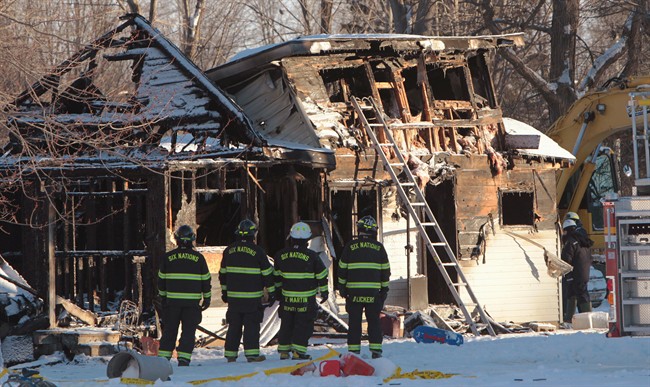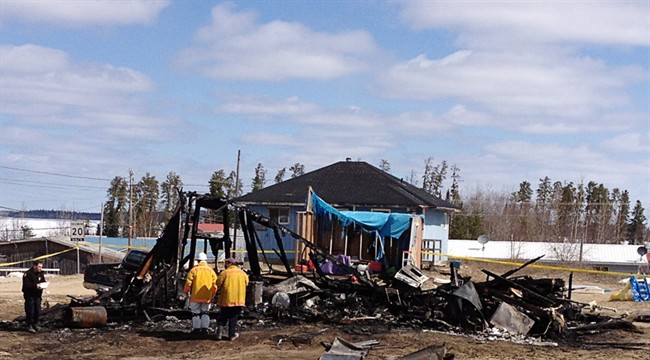OTTAWA – Indigenous Affairs Minister Carolyn Bennett says the federal government doesn’t know how many indigenous people die in fires on reserves because it no longer collects such collect statistics.

Bennett said the collection of fire data was stopped six years ago to ease the “reporting burden” on First Nations communities.
READ MORE: Little fire protection on reserves across Canada: Report
She provided the update in written responses to questions, recently tabled in Parliament.
The update has new relevance following a southern Ontario house fire Thursday that’s believed to have killed four young children and their father.
Chief Randall Phillips of the Oneida Nation of the Thames lashed out at the federal government for rejecting his community’s plea for money to upgrade 50 houses.

Phillips said the two-storey home on the reserve near London, Ont., was old and “basically kindling” before it caught fire.
Manitoba Liberal MP Robert-Falcon Ouellette asked Bennett for a breakdown of the number fires per year on reserves, as well as the number of deaths and injuries. He also wanted to know how much was spent on fire prevention on reserves.
WATCH: Deadly fire raises questions about safety on First Nations
In her written response, Bennett said that 2010 was the last year in which fire statistics were collected.
“A decision was taken to stop collecting data on fire incidents on reserve in order to reduce the reporting burden on First Nations.”
She said “changes were made to the reporting cycle,” in 2011, “which included eliminating the tool by which First Nations reported this information.”
READ MORE: 13 children among fatalities in 11 First Nations fires since 2006
Bennett said the new policy took time to take effect so some communities may have submitted data up to 2013.
But that information “was neither analyzed nor published and it is incomplete.”
She said her department would work with partners, including the Aboriginal Firefighters Association of Canada, “on new options to address the fire data gaps on reserve.”
WATCH: State of emergency declared after fire destroys band office, store on Shamattawa First Nation

“All options to generate this data are on the table so we can ensure the right programs and policies are in place to keep First Nations communities safe,” she added.
READ MORE: Reserve had fire truck, but no equipment or crew
Bennett said her department provides $27 million a year for fire protection services, including fire prevention and fire suppression.
While the government may not have a clear picture of fire-related deaths in aboriginal communities, there has been plenty of anecdotal evidence.
Earlier this year, a fire on northern Ontario’s remote Pikangikum First Nation left nine people dead, including a five-month-old baby. Ontario Regional Chief Isadore Day blamed Third-World living conditions for that tragedy.
An internal federal government obtained earlier this year by The Canadian Press found that First Nations residents were 10 times more likely to die in a house fire than people living off reserve. The 2011 report also said that the fire rates for First Nations were 2.4 times higher than for the rest of Canada.
The report was examining insurance coverage for First Nations and found almost half across Canada had “little to no fire protection,” while many relied on poorly trained volunteer firefighters.

Comments